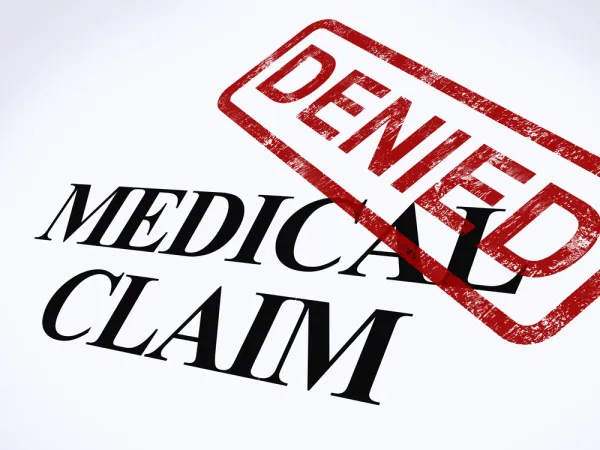Modifier Coding Alert
Follow 3 Tips from NGS to Increase Your Modifier Success

Don’t count 99 as useless.
While you may think you have a handle on every modifier you use on your claims, it never hurts to hear what payers have to say about how you should use modifiers. Improve your claims success by following the advice from the recent “Frequently Used Modifiers” teleconference sponsored by Part B MAC NGS Medicare, during which claims representatives shared do’s and don’ts about several modifiers that Medicare accepts. Consider these three modifiers for your next claims.
What’s Modifier 99?
Most Medicare payer systems allow you to append four modifiers per claim line, said NGS’s Michele Poulos during the call, but if you have more than four modifiers to append to a particular line item, you should turn to modifier 99 (Multiple modifiers).
You’ll “enter modifier 99 in the first modifier field…and then in the narrative field (item 19 on the CMS-1500), you would list all of those modifiers in the correct ranking order, making sure to identify which detail line or procedure code to which the modifiers apply,” she advised.
Modifier 50 Only Applies to Two Sides of One Site
Although you may think you’re a modifier 50 (Bilateral procedure) pro, the reality is that NGS reps see scores of denials for it, they noted during the call.
The bilateral procedure modifier only applies if you’re addressing the same body site on both sides, on the same date of service, Poulos said. If you are treating a patient’s left ear and right eye, you don’t need modifier 50. If you’re treating both eyes or both ears, then modifier 50 is the right one to use.
If you do provide a true bilateral procedure, you should “submit only one line item with the appropriate code and then append the modifier 50 and report only one unit, she added. “You want to make sure you check the LCD (local coverage determination) for possible specific bilateral reporting instructions, because sometimes in the LCD it will instruct you to use the RT (Right side) or LT (Left side) rather than the 50,” she added.
In addition, any CPT® codes that already have the word “bilateral” in their descriptors do not require modifier 50 “because the code is inclusive of the bilateral procedure anyway,” Poulos said.
Modifier 24 Starts the Day After Surgery
You should append modifier 24 (Unrelated evaluation and management service by the same physician or other qualified Health care professional during a postoperative period) to an E/M code for any E/M services you perform during the global period that are unrelated to the surgery, said NGS’s Arlene Dunphy, CPC.
A common reason for denial is when providers append modifier 24 to an E/M code on the same date as the surgery — in actuality, you can’t use this modifier until the day after the procedure that spurs the global period, Dunphy said.
In addition, practices often see modifier 24 denials if they use it for services related to the surgery, such as a complication, or if they append it to the surgical code instead of the E/M code. “The medical record must support that the E/M visit was unrelated to the postoperative care, and the diagnosis should clearly indicate the reason for the unrelated postoperative encounter,” Dunphy added.
If a patient is having significant postoperative pain and new testing is ordered, the doctor should use his or her clinical opinion to determine whether or not the E/M service is related. “If it’s unrelated, you can use the 24 modifier,” but if it’s related, you cannot report the E/M service, even with the modifier 24, Dunphy said.
Related Articles
Modifier Coding Alert
- News You Can Use:
Don't Skip Over 59 In Favor of the New X Modifiers
CMS says you can stick with 59 for now. Like most coders, you are probably [...] - Payer Pointers:
Follow 3 Tips from NGS to Increase Your Modifier Success
Don’t count 99 as useless. While you may think you have a handle on every [...] - Billing:
Follow 6 Tips to Transform Your Accounts Receivables
Pre-visit and post-visit efforts are as important as in-person patient contacts. Coordinated efforts are key [...] - Reader Questions:
ICD-10 Won't Eliminate Laterality Modifier Use
Question: I have heard the ICD-10 codes are expanded and more specific than ICD-9 codes. One [...] - Reader Questions:
Skip 51 With CMT Codes
Question: A patient with a complaint of back pain presented to the doctor. After identifying subluxation, [...] - Reader Questions:
XP Won't Override 0 Modifier Indicato
Question: One of our physicians performed an E/M service along with same day psychotherapy (90837) performed [...] - Reader Questions:
Modifier 22 May Be Your Unusually Complex 11982 Answer
Question: Our surgeon removed 56 antibiotic beads from a patient’s distal radius that were placed over [...] - Reader Questions:
Stick to Most Definitive ICD-10 Code
Question: Though there are many crosswalks between ICD-9 to ICD-10, there are many codes that do [...] - You Be the Coder:
Get to Know Modifier JW
Question: Can we bill for pump medications that were ordered and not used due to the [...]




